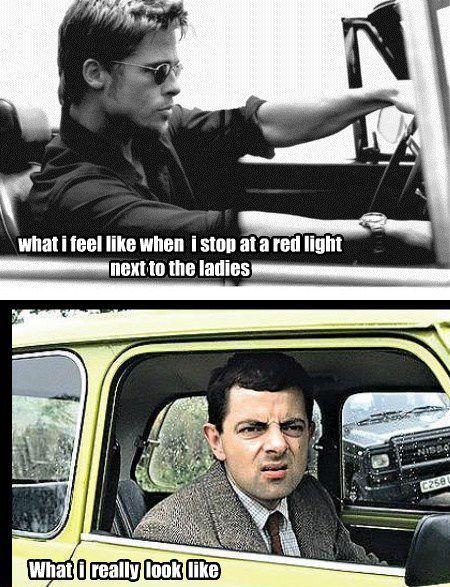Have you ever been told that you resemble the enigmatic detective 'L' from the popular anime series Death Note? Discovering why people say 'I look like L' can be an intriguing journey into self-perception and identity. This comparison often stems from certain physical traits or demeanor that align with the iconic character's unique appearance. As we delve deeper, you'll uncover how this resemblance might just boost your confidence and help you embrace your individuality.
In today's world, where self-image plays a crucial role in personal development, finding similarities to beloved characters such as 'L' can significantly enhance one's self-esteem. By understanding what makes someone appear like 'L', individuals can learn to appreciate their distinct features and quirks. This article explores various perspectives on how people perceive others' appearances and offers insights into building confidence through embracing these likenesses. So, let's explore together why some may think they resemble the famous detective and how it impacts them positively.
When someone says they look like L, they are often referring to specific characteristics associated with the fictional character from Death Note. These traits include messy hair, dark circles under the eyes, and an overall air of mystery. In this piece, we will examine different viewpoints on how people perceive appearances, particularly when comparing themselves to well-known figures in media. We'll also discuss how recognizing these resemblances can lead to increased self-assurance and acceptance of one's uniqueness.
Unveiling Your Inner Detective: Traits That Resemble 'L'
The fascination with looking like 'L' often begins by identifying shared physical attributes. Messy hair, prominent dark circles under the eyes, and a somewhat disheveled appearance contribute to the likeness many associate with the character. Such features set 'L' apart as unconventional yet captivating, drawing attention not only for his intellect but also for his distinctive look. Recognizing these traits in oneself can spark curiosity about how others view us and encourage self-exploration.
Beyond physical appearance, behavioral aspects play a significant role in resembling 'L'. His calm demeanor, analytical thinking, and occasional eccentricities create an aura of intrigue around him. People who exhibit similar behaviors might find themselves being compared to the detective more frequently. Embracing these qualities allows individuals to connect with the character on a deeper level while fostering pride in their own personality traits.
As society places immense pressure on conforming to traditional standards of beauty, standing out becomes both challenging and rewarding. Those who bear resemblance to 'L' have the opportunity to redefine attractiveness by celebrating their non-conformist features. By doing so, they inspire others to appreciate diversity in looks and personalities, ultimately promoting greater acceptance within communities.
Confidence Through Quirkiness: Embracing Uniqueness
Embracing one's uniqueness is essential for building confidence, especially when that uniqueness manifests in ways reminiscent of 'L'. Rather than shying away from comparisons, individuals should take pride in their distinctiveness. Acknowledging that having unruly hair or noticeable dark circles doesn't diminish their worth helps foster self-acceptance. Furthermore, associating these traits with a celebrated figure like 'L' transforms potential insecurities into strengths.
Confidence stems from authenticity - staying true to oneself without succumbing to societal pressures. When people recognize parallels between themselves and admired characters, they gain validation for embracing their originality. For those who identify with 'L', this connection serves as a reminder that being different isn't something to hide; instead, it's something to cherish and showcase proudly.
By highlighting positive aspects of their appearance and behavior linked to 'L', individuals cultivate resilience against negative external judgments. They learn to focus on internal values rather than superficial aesthetics, leading to healthier self-images. Ultimately, seeing oneself through the lens of beloved fictional personas empowers people to assert their individuality confidently.
Design Choices Behind Font Similarities: A Closer Look at Sans-Serif Fonts
Another aspect contributing to the perception of looking like 'L' involves typography design choices in digital media. Many users notice how lowercase l resembles capital i due to sans-serif fonts used extensively online. This similarity arises because sans-serif fonts eliminate decorative elements called serifs, which traditionally differentiate letters more clearly. Consequently, certain font styles render these characters almost indistinguishable, affecting readability and visual interpretation.
Understanding why small l appears similar to uppercase i sheds light on broader implications regarding representation across platforms. Design decisions impact how information is conveyed visually, influencing user experiences and potentially altering perceptions of text-based content. As technology continues evolving rapidly, awareness of such nuances grows increasingly important for effective communication.
Incorporating knowledge about font designs into discussions about personal appearance adds depth to conversations surrounding self-expression. Just as typographic variations affect how words appear, subtle differences in facial features or body language shape how we're perceived by others. Recognizing these connections encourages thoughtful consideration of all factors influencing first impressions and fosters greater empathy towards diverse representations in everyday life.

